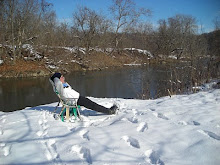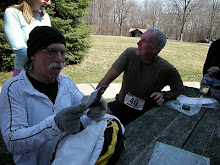JPhoto
Outside winter’s display window, a lamppost lit steady falling snow all through the setting nightfall and on toward dawn. A single street lamp casted shadows into his third floor apartment office room, as he sat staring out the double-paned glass hypnotized by the accumulating snow narrowly stacking upon the ledges and roofs, which were at eye level. The gently dancing crystalized flakes lit up like luminescent schools of miniature tropical fish swimming in a giant deep ocean fishbowl.
His room was dark except for a single curved antique lamp with its fluted glass shaped shade pointing down toward his wicker wastebasket. The deflected light brought a mood to the room that he desired, since he wanted to curl up inside his pile of woolen blankets, then burrow deep in his well-worn brown corduroy stuffed easy chair, which was a hand-me-down from his grandmother after the estate was settled, to watch the night pass silently by.
Evening snows invite silence, and the body’s need to be securely wrapped up in warmth while mesmerized by nature’s frosty rain. If it were summer, he might have the windows open listening to the droplets tap upon the window glass, but the silent snow fell as quietly as clouds drifting across the night’s sky. The absence of its sound was mystifying.
As a child, he spent time in his room folding paper airplanes into various designs sending them through the air toward hanging targets and wastebaskets. He would lay on his bed, pillows propped up against the corner wall tossing handmade paper airplanes at his simple hanging targets that hung from kite string taped upon the ceiling. Now an adult, this historical pastime continued. He folded them without looking, and often in the dark, feeling his way along the edges of the paper with delicate precision and skill. His fingers took their time caressing the corners of the specially chosen sheets, which were picked from the stacked trays storing the various grades offered to him.
His mind often needed distraction when it could not drop anxious and repetitive thoughts into the available mental depository in order to shrink each one into rubble suitable for discard knowing that this place inside his mind would gently disarm what were actually of minimal importance.
Tonight he folded airplanes using his lightest weighted paper and tossing them at each of his two hanging Alexander Calder mobiles purchased while at the Smithsonian museum last summer when visiting a friend in Washington, DC. He enjoyed spinning the mobiles in this way, which made him feel like he had stretched beyond the mundane and into the realm of skill, like arranging the colors on a Rubik’s Cube into desired patterns.
He had lingering and nagging thoughts. Ones that would wake him at 3 A.M. wanting immediate resolution, which stressed him because it was more than likely there was not one available that would drift him back into soothing sleep. His dreams had him on long bus rides missing stops, whereby he would have to then ride another one back to where he should have gotten off. Other dreams had him in apartments or rooms he did not recognize uncertain of what to do next.
In order to return to calm, he would sit up in his dark bedroom, pick up one of his airplanes creasing it back into a single dimension, and then fan it open tossing it toward the illuminating hallway night light. On the floor by his nightstand were several paper airplanes idly waiting for flight parked in a small box.
This activity was meditative; no mantra, no teacher, no method, only the flight of paper airplanes. Watching them move silently through the bedroom air quieted his mind drawing him away from noisy thoughts as each one soared below blue ceiling tiles toward the dim light of the hallway, tapping into memories of his youth, in silence, once more.
After several minutes he lied back down and fell back into sleep, while outside the snow quickly piled high deadening all of the evening sounds. (591 words)







